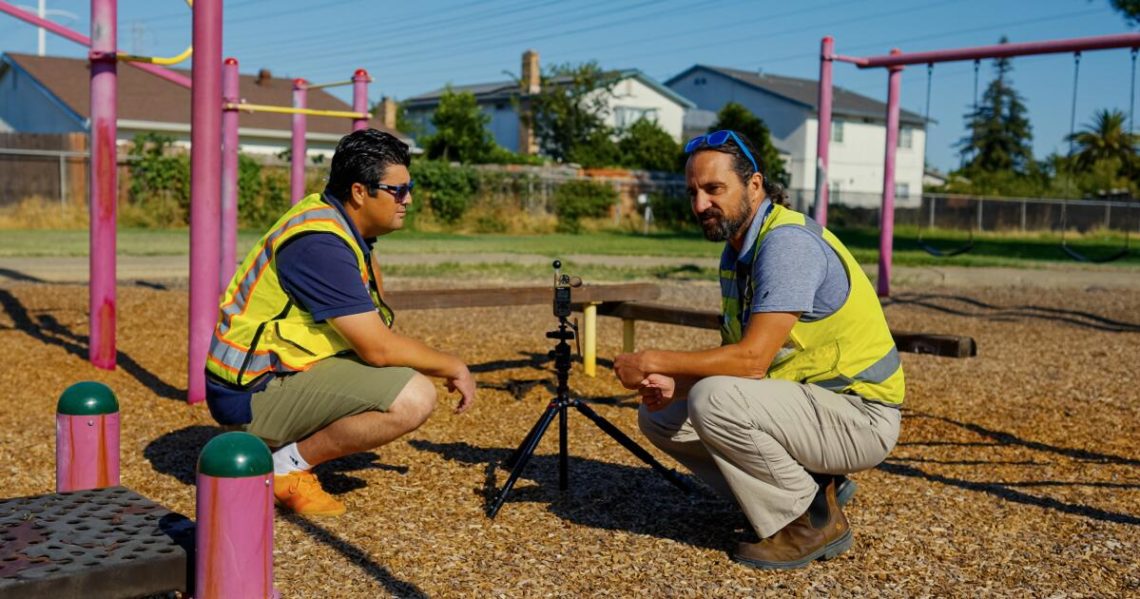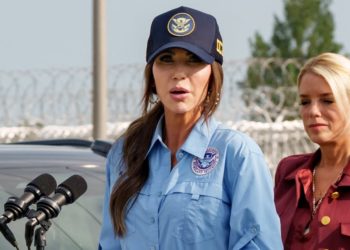The vast majority of urban, public grade schools in California are paved-over “nature deserts” sorely lacking in trees or shade — leaving most of the state’s 5.8 million school-age children to bake in the sun during breaks from the classroom as rising global temperatures usher in more dangerous heat waves.
That’s the conclusion of a team of California researchers from UCLA, UC Davis and UC Berkeley who studied changes in the tree cover at 7,262 urban public schools across the Golden State between 2018 through 2022.
The ongoing joint project, which drew from urban tree canopy maps developed by study partners the California Department of Forestry and Fire Protection and the U.S. Forest Service, revealed that 85% of the schools lost about 1.8% of tree cover on average in that four-year span.
The situation appears to be just as worrisome today, the team said.
The researchers also collaborated with the nonprofit Green Schoolyards America, which found in its own 2024 study that California’s public K-12 schoolyards have a median tree cover of just 6.4%. And more than half of that canopy exists only as decoration at school entrances, in parking lots and along campus perimeters.
“Extreme heat is becoming a major public health concern in California and across the country, and trees can play a really big role in helping us cool down those schools and also build climate resilience,” said Kirsten Schwarz, the research lead at UCLA.
Results from the 2018 to 2022 study, which was funded by the U.S. Forest Service, were recently published in the journal Urban Forestry and Urban Planning.
While 15% of the schools surveyed saw gains in tree cover thanks in part to schoolyard greening projects — particularly in the Central Valley, around Sacramento and in Imperial County — many individual schools surveyed experienced big losses in net tree cover in that time. In some cases, those added up to more than 40%.
Among the state’s largest school districts, San Francisco had the greatest canopy loss, 16.3%. On the other end of the spectrum, Sacramento had the greatest gain at 7.5%, followed by Long Beach, which saw a 4% canopy increase.
Schools in Los Angeles showed a small net loss of 0.5%. The researchers cautioned not to read too much into that modest figure, because longstanding disparities in tree cover and shade across the city still expose schools in poorer neighborhoods away from the ocean to greater sun and intense outdoor heat than schools that benefit from their proximity to cooling ocean breezes and lingering marine cloud cover.
As part of the continuing data collection, the team conducted new field research in a subset of schools this summer — some in Southern California, some in the Bay Area and some in the Central Valley. Due to research agreements with the different districts, Schwarz said she could not disclose the exact locations.
Researchers from UCLA performed a complete tree inventory for 16 schools in each district, counting all of the trees they found on a campus, mapping their exact locations, identifying the many different species they came across, measuring trees at the base and crown and assessing the overall health of each tree.
Accompanying the UCLA researchers to a selection of schools in each district were researchers from UC Davis who took heat measurements.
They brought portable weather stations and sensors, as well as swatches of different paving materials such as grass, mulch, turf, rubber and concrete to each site. The researchers took thermal images, captured air temperatures and measured the humidity around the surface materials at different times of day when kids are most likely to be outside at school. This allowed the team to examine the microclimates that are specific to those campuses over an extended span.
It’s important to measure outdoor temperatures on school property because children spend so much of their time at school during the academic year and because their smaller statures place them at increased risk from heat radiating from pavement, said Alessandro Ossola, an urban plant scientist who leads the UC Davis team.
Children also haven’t fully developed the ability to regulate their body temperature they way adults can, making them more vulnerable to extreme heat and potentially hindering their ability to learn.
In addition, Ossola stressed that for children who live in places without grass or safe parks and playgrounds, school might be the one place where they can experience cooling outdoor environments and unpaved surfaces.
“With that information combined — looking at the complete tree inventory and looking at the really extensive heat measurements on an individual campus — we can better understand the cooling benefits of those trees,” Schwarz said. “We can also look at what tree species that are there and how well-adapted they are to future climate change.”
Schwarz said the team also interviewed locals at each location to find who is taking care of the trees at schools, what barriers exist that prevent good tree maintenance and what programs are in place to make tree care easier.
There are many obstacles to making campuses more hospitable. Schwarz cited a 2024 policy report by her UCLA team that examined the greening of inadequately shaded schools and policies that make it difficult to carry out improvements. In some cases, a lack of staffing, bureaucratic hurdles, state seismic safety standards that encourage building outward rather than vertically and funding models that prioritize low-maintenance campuses stood in the way of schoolyard greening, that report said.
Schwarz, an urban ecologist, said she was surprised to learn about the extent to which regulations requiring non-grass surfaces for sports and outdoor physical education dictated the design of some schoolyards.
Other schools have to choose between conflicting long-term priorities, the student report said: Plans for the future construction of additional classrooms to accommodate growing student enrollments can outweigh the desire to create shadier open spaces.
The tree canopy researchers plan to present each participating school with a tree inventory, analysis of findings, policy recommendations and suggestions for incorporating their study into classroom lessons and parent outreach.
The researchers said their main motivation in initiating the study was to help communities get the most from $150 million in Cal Fire grants approved by the state Legislature that schools can apply for to plant grass and trees on their campuses and reduce the harm of heat-radiating surfaces such as asphalt.
“That’s a really key part of this conversation about schoolyard greening, because de-paving is that critical first step,” Schwarz said. “The overarching goal is, how can we maximize these investments that we’re making in school greening?”
Ossola said that in some ways, Californians who want to improve their children’s schoolyards are playing catchup even with community will and funding sources in place. It can take decades for young trees planted today to mature enough to provide the necessary cooling effects that can make children safer on a warming planet.
“This is a critical investment that we should’ve done 20 or 50 years ago,” Ossola said. “Now we’re kind of missing the bus.”
The post Most of California’s public K-12 students go to school on campuses with virtually no shade appeared first on Los Angeles Times.




